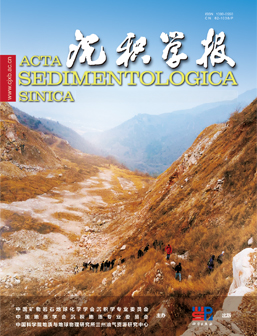Lithofacies Distribution and Organic Matter Enrichment of Shale under the Constraint of Astronomical Cycles —— a Case Study of Dongyuemiao Member in Fuxing Area, Sichuan Basin
doi: 10.14027/j.issn.1000-0550.2023.120
- Received Date: 2023-07-20
- Available Online: 2023-12-22
-
Key words:
- lacustrine shale oil /
- lithofacies /
- lithofacies association /
- astronomical cycles /
- organic-matter enrichment /
- Sichuan Basin
Abstract: 【Objective】Significant breakthroughs have been made in the exploration of Jurassic continental shale oil in the Sichuan Basin. Due to the small grain size, rapid facies changes, and strong heterogeneity of continental mud shale facies, it is urgently necessary to systematically study the development rules of lithofacies and organic matter enrichment characteristics in the Dongyuemiao Member.【Methods】Taking the Dongyuemiao Member of the Ziliujing Formation in the eastern part of the Sichuan Basin as an example, based on core data, non-core lithofacies interpretation from well logging, and utilizing theory of cyclic stratigraphy, various methods such as data preprocessing, power spectral analysis, evolutionary spectral analysis, filtering of data, correlation coefficient analysis, and astronomical tuning were employed to establish a 4-5 level high frequency stratigraphic framework for the study area. Through the sedimentary response of astronomical cycles, the development rules of mud shale lithofacies and organic matter enrichment characteristics under high-frequency chronostratigraphic framework were discussed. 【Results】 ① The Dongyuemiao Member shows a good astronomical cycle signal,and the long eccentricity (405 ka), short eccentricity (128 ka), obliquity (43 ka), and precession (21 ka) astronomical cycles were extracted. There are four long eccentricity cycles and fifteen short eccentricity cycles. The long eccentricity cycle and short eccentricity cycle were used as the subdivision units of the fourth-order and fifth-order sequences, establishing a 4-5 level chronostratigraphic framework for the Dongyuemiao Member in the study area. ②Taking into account rock thins, X-ray diffraction whole-rock analysis, and well logging data, the principle of structure first is employed, with components and sedimentary structures as the primary basis The Dongyuemiao Member is divided into two lithofacies types: indigenous organic-rich laminated mudstone facies , exogenous shell-bearing mudstone and shell limestone facies and seven lithofacies types including laminated silty-rich argillaceous mudstone facies, massive silt-rich argillaceous mudstone facies, laminated mixed mudstone facies, laminated shell-bearing silty-rich argillaceous mudstone facies, laminated silt-bearing shell-rich argillaceous mudstone facies, laminated silt-bearing clay-rich shelly mudstone facies, massive argillaceous shell limestone facies, massive argillaceous shell limestone facies. ③ The coupling relationship between paleoclimate, mineral composition, and eccentricity revealed that during periods of high eccentricity and its maximum amplitude, the climate was humid and hot with significant seasonal variations. This led to the input of a large amount of fine-grained material and organic matter from the land and the development of indigenous organic-rich laminated mud shale facies. During periods of low eccentricity and its minimum amplitude, the climate was dry and cold with less input of terrigenous materials. The clay mineral and detrital mineral content were lower, and the lithofacies were dominated by exogenous shell-bearing mudstone facies, which affected the development of organic matter. The Dongyuemiao Member is mainly controlled by eccentricity cycles, and the deposition of lacustrine shelly mud shale is controlled by the climate changes driven by the 405 ka and 128 ka eccentricity cycles.【Conclusion】Long eccentricity is a key factor controlling the distribution of lithofacies and organic matter enrichment. It controls the ordered development of indigenous organic-rich laminated mud shale facies and exogenous shell-bearing mudstone and shell-bearing limestone facies. Short eccentricity has a limited impact on organic matter enrichment but significantly controls the lithofacies composition of exogenous shell-bearing mudstone.
| Citation: | Lithofacies Distribution and Organic Matter Enrichment of Shale under the Constraint of Astronomical Cycles —— a Case Study of Dongyuemiao Member in Fuxing Area, Sichuan Basin[J]. Acta Sedimentologica Sinica. doi: 10.14027/j.issn.1000-0550.2023.120 |






 DownLoad:
DownLoad: